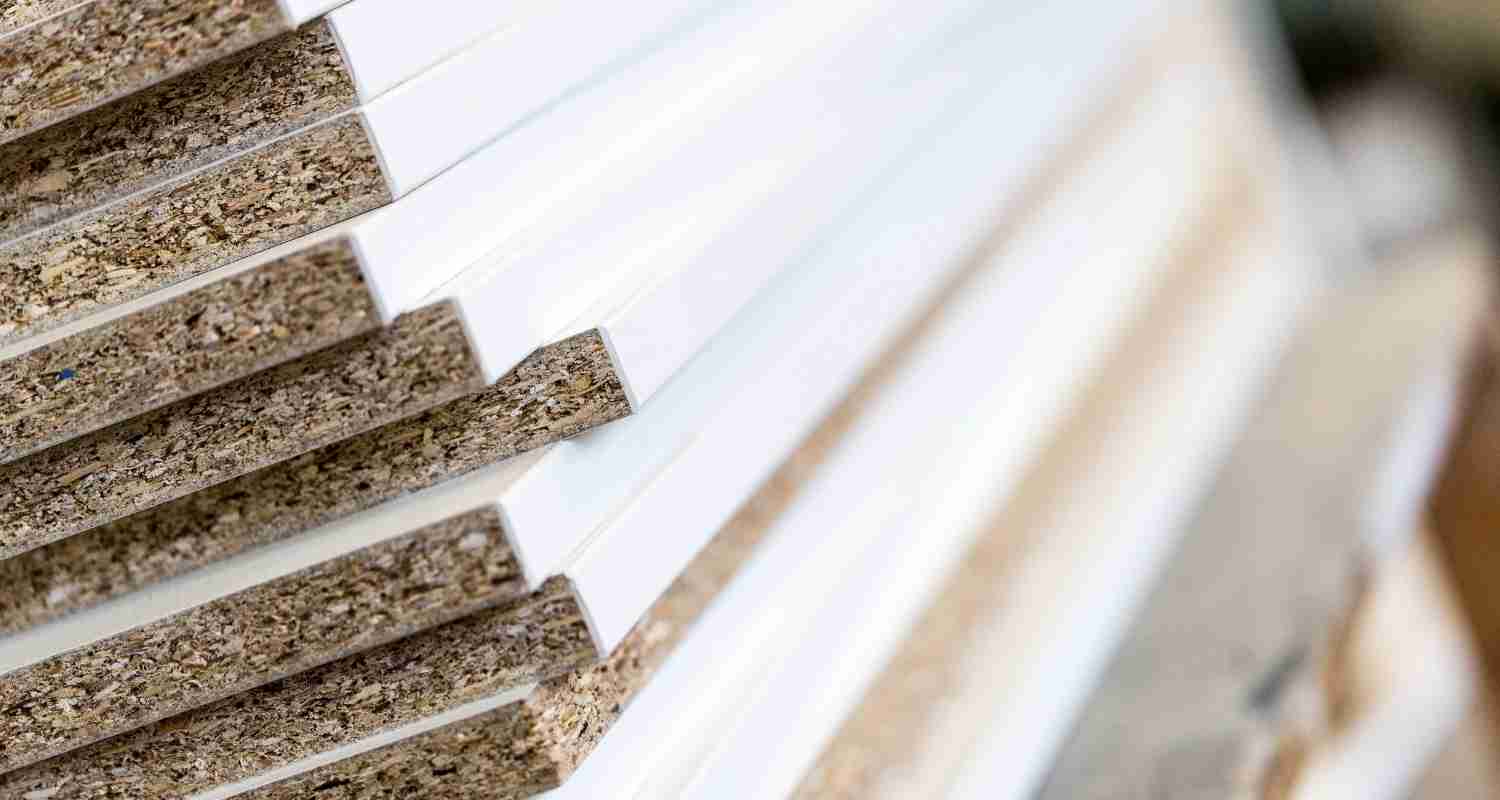The Challenge of Painting Particleboard Cabinets

Painting particleboard cabinets can be a daunting task, as the material presents unique challenges compared to solid wood. While it’s possible to achieve a beautiful finish, it requires careful preparation and specific techniques to ensure a durable and long-lasting result.
Understanding the Challenges of Painting Particleboard
Particleboard, a composite wood made from wood chips and resin, has a less stable structure than solid wood, making it more susceptible to issues like chipping, peeling, and uneven surfaces. The porous nature of particleboard can also cause paint to soak in unevenly, leading to a blotchy finish.
Preparing Particleboard Cabinets for Painting
To overcome these challenges and achieve a smooth, even paint finish, meticulous preparation is essential. This involves a series of steps that address the specific characteristics of particleboard:
Sanding
Sanding is crucial to create a smooth surface for the paint to adhere to. It helps remove any imperfections, such as rough edges, uneven surfaces, or previous coatings. Start with a coarse-grit sandpaper (80-120 grit) to remove any significant imperfections. Gradually progress to finer grits (150-220 grit) for a smoother finish. Sanding in the direction of the wood grain helps prevent scratches and ensures a uniform surface.
Cleaning
After sanding, thoroughly clean the cabinets to remove dust and debris. A damp cloth with mild soap or a specialized wood cleaner is suitable for this purpose. Allow the cabinets to dry completely before proceeding to the next step.
Priming
Priming is a critical step that creates a barrier between the particleboard and the paint, enhancing adhesion and preventing the paint from soaking into the porous surface. A good quality primer designed for use on particleboard is essential. Apply a thin, even coat of primer using a brush or roller, ensuring complete coverage. Allow the primer to dry completely before painting.
Choosing the Right Paint for Particleboard Cabinets

Selecting the right paint for your particleboard cabinets is crucial to achieving a durable and aesthetically pleasing finish. The type of paint you choose will significantly impact the longevity and appearance of your cabinets.
Types of Paint for Particleboard Cabinets
The right paint for your particleboard cabinets depends on your needs and preferences. Here’s a breakdown of the most common paint types and their characteristics:
- Oil-Based Paint: Oil-based paints offer excellent durability, water resistance, and a hard, smooth finish. They are also known for their self-leveling properties, which can help to create a seamless look. However, oil-based paints have some drawbacks. They are slow to dry, require solvents for cleanup, and can emit strong odors. They are also less environmentally friendly than latex paints.
- Latex Paint: Latex paints are water-based and offer several advantages over oil-based paints. They dry quickly, are easy to clean up with soap and water, and have low VOC emissions. However, latex paints may not be as durable as oil-based paints, especially in high-traffic areas. They also tend to be less resistant to moisture and stains.
- Specialized Cabinet Paint: Specialized cabinet paints are formulated specifically for use on cabinets, offering excellent adhesion, durability, and a smooth, even finish. These paints often contain additives that enhance their performance, such as mildewcide for moisture resistance and anti-yellowing agents for color retention.
Factors to Consider When Choosing Paint
When selecting paint for particleboard cabinets, consider the following factors:
- Durability: Particleboard cabinets are susceptible to wear and tear, so choosing a durable paint is essential. Oil-based paints offer the highest durability, followed by specialized cabinet paints and then latex paints.
- Finish: The desired finish will influence your paint choice. Oil-based paints typically provide a high-gloss finish, while latex paints offer a range of finishes, from matte to semi-gloss. Specialized cabinet paints are available in various finishes to meet your aesthetic preferences.
- Application: Consider the ease of application when choosing a paint. Latex paints are generally easier to apply than oil-based paints, which require more care and preparation.
- Cost: Oil-based paints are generally more expensive than latex paints. Specialized cabinet paints can also be more expensive but offer enhanced performance.
Key Qualities to Look for in Particleboard Cabinet Paint
To ensure a successful paint job on particleboard cabinets, look for paint that possesses the following qualities:
- Excellent Adhesion: Particleboard has a porous surface, so paint with strong adhesion is crucial to prevent peeling or chipping.
- Moisture Resistance: Particleboard is susceptible to moisture damage, so choose a paint with good moisture resistance to protect your cabinets.
- Durability: Select a paint that can withstand everyday wear and tear, especially in high-traffic areas.
- Self-Leveling Properties: Look for paint that self-levels to create a smooth, even finish.
- Easy Application: Choose a paint that is easy to apply and provides good coverage.
Painting Techniques for Particleboard Cabinets: Can You Paint Particle Board Cabinets

Painting particleboard cabinets can be a rewarding project, transforming outdated cabinets into a stylish focal point in your kitchen or bathroom. However, achieving a smooth and professional finish requires careful preparation and the right painting techniques.
Preparing Particleboard Cabinets for Painting
Proper preparation is key to a successful paint job. Before applying any paint, it’s essential to ensure the surface is clean, smooth, and free from any imperfections. Here’s a step-by-step guide for preparing your particleboard cabinets:
- Clean the Surface: Start by cleaning the cabinets thoroughly with a degreaser or mild dish soap and water. This removes any grease, dirt, or grime that could interfere with the paint’s adhesion.
- Sand the Surface: Sanding is crucial for creating a smooth surface for the paint to adhere to. Use fine-grit sandpaper (120-180 grit) to lightly sand the cabinets, removing any rough edges, imperfections, or previous paint layers.
- Fill Gaps and Cracks: Use wood filler to fill any gaps, cracks, or imperfections in the particleboard. Apply the filler according to the manufacturer’s instructions, allowing it to dry completely before sanding it smooth.
- Prime the Surface: Priming is essential for particleboard cabinets, as it helps to seal the surface, improve paint adhesion, and prevent the wood grain from showing through the paint. Choose a primer specifically designed for particleboard or wood surfaces. Apply the primer evenly, using a brush or roller, and allow it to dry completely before painting.
Choosing the Right Paint and Tools
Selecting the right paint and tools is essential for achieving a professional finish.
- Paint Type: For particleboard cabinets, choose a high-quality paint that is specifically designed for kitchen or bathroom use. These paints are durable, moisture-resistant, and easy to clean. Consider using a latex-based paint, as it’s easy to apply and dries quickly. For a more durable finish, you can also use an oil-based paint, but it requires more drying time and can be more difficult to clean up.
- Brushes and Rollers: Use a high-quality brush or roller designed for the type of paint you choose. For smaller areas and details, a good-quality brush with synthetic bristles is recommended. For larger surfaces, a roller with a nap length appropriate for the paint thickness will provide a smooth and even finish.
Painting Techniques for a Smooth Finish
Achieving a smooth and professional finish on particleboard cabinets requires careful application techniques. Here’s a step-by-step guide for painting your cabinets:
- Prepare the Work Area: Protect your surrounding area with drop cloths or plastic sheeting to prevent paint splatters. Open windows for ventilation and wear a mask to protect yourself from paint fumes.
- Apply the First Coat: Start by applying a thin, even coat of paint to the cabinets. Use long, smooth strokes with the brush or roller, avoiding dripping or pooling. Focus on achieving even coverage, especially around edges and corners. Allow the first coat to dry completely according to the manufacturer’s instructions.
- Sand Between Coats: After the first coat dries, lightly sand the surface with fine-grit sandpaper (220 grit) to smooth out any imperfections or brush strokes. Wipe away the sanding dust with a damp cloth.
- Apply Subsequent Coats: Apply additional coats of paint, following the same steps as for the first coat. Allow each coat to dry completely before applying the next. Two to three coats are usually sufficient for a durable and opaque finish.
Tips for a Professional Finish, Can you paint particle board cabinets
- Thin the Paint: For a smoother finish, especially when using a roller, you can thin the paint slightly with water or a paint thinner according to the manufacturer’s instructions. This helps the paint flow more easily and reduces the risk of brush strokes.
- Avoid Overlapping: When applying paint, avoid overlapping the brush or roller strokes excessively. This can create uneven coverage and visible brush marks. Use long, smooth strokes and try to maintain a consistent amount of paint on the brush or roller.
- Clean Up: Clean your brushes and rollers thoroughly with soap and water or a paint thinner, depending on the type of paint you used. This ensures that they are ready for the next project and prevents the paint from hardening and becoming unusable.
Can you paint particle board cabinets – While painting particleboard cabinets is possible, the results can be less than ideal due to the material’s porous nature. For a more robust and aesthetically pleasing option, consider a double door pine cabinet , which offers a natural wood grain that can be stained or painted for a truly customized look.
Ultimately, the choice between particleboard and pine comes down to personal preference and budget, but for a long-lasting and beautiful finish, solid wood is often the better investment.
While painting particle board cabinets is possible, it’s crucial to understand the limitations of this material. Particle board can be porous and prone to chipping, making a smooth, durable finish challenging. However, if you’re aiming for a classic look, consider using white shaker cabinet doors and drawer fronts , which can be easily replaced with a fresh coat of paint should the need arise.
Ultimately, the decision to paint particle board cabinets boils down to your budget, desired aesthetic, and the level of commitment you’re willing to make.
